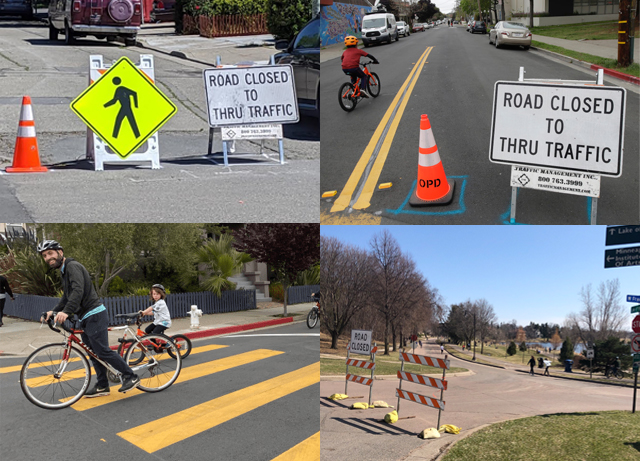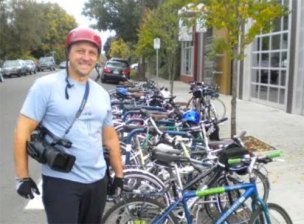STREETFILMS: As New York Starts ‘Open Streets,’ Let’s Look at How Oakland Does It

We’re not reinventing the wheel. We’re just slowing it down.
Mayor de Blasio’s announcement Friday of the initial streets that will be opened to pedestrians seems to be leaning more on the model of Oakland’s “slow streets” program rather than the initial NYPD-overseen pilot program that could not expand beyond a scant 1.5 miles because of the police department’s insistence of deploying at least one officer one every corner.
As the latest film from our Streetsblog colleague Clarence Eckerson Jr. reveals, Oakland figured out how to do it with minimal disruption.
“People are using the streets, but not overly using them,” the city’s Department of Transportation Director Ryan Russo said. “We’re using soft closures with road closed and pedestrian and bicycle warning signs … but still allowing emergency vehicles and local deliveries, making those streets much more welcoming.”
Russo added that drivers have respected the program and are driving slowly. “The police department is not enforcing slow streets,” he said. “We want it to be self-enforcing. We’re proud that other cities are also implementing slow streets.”
The mayor had long insisted that New York City is different from the Bay Area. And, indeed, it is, but many of the streets chosen by the mayor for the first part of his 100-mile project — streets such as East End Avenue in Manhattan, Reservoir Oval in The Bronx, or Front Street in Staten Island — are roadways that can be Oaklandified without significant police enforcement.
And maybe New York won’t prove so different after all.
